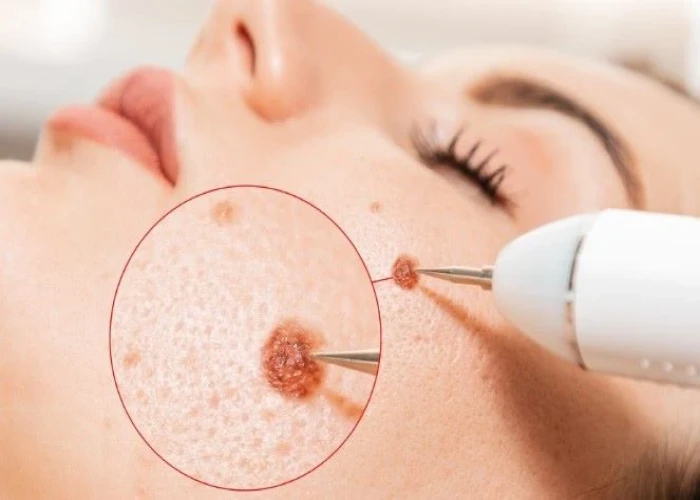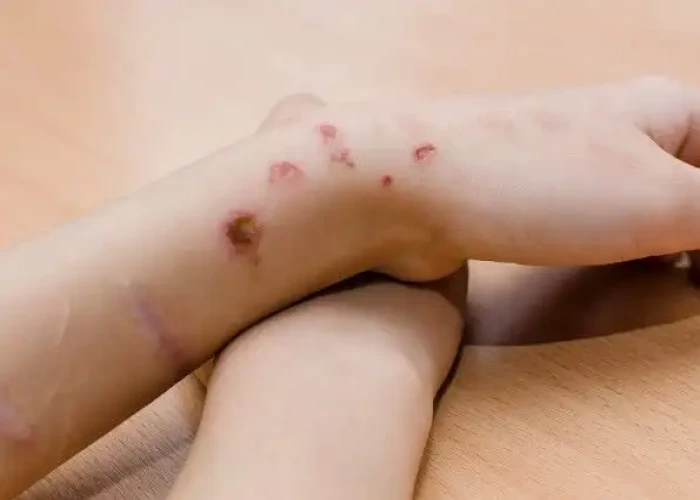 Welcome
Welcome
“May all be happy, may all be healed, may all be at peace and may no one ever suffer."
Moles

Moles are common skin growths that can appear anywhere on the body. They are typically brown or black in color and can vary in size and shape. Moles are caused by the accumulation of pigmented cells, called melanocytes, in the skin.
Most moles are harmless, but some may develop into skin cancer. It is important to monitor moles for changes in size, shape, color, or texture, as these may be signs of skin cancer. The ABCDE rule can help identify potentially cancerous moles:
- Asymmetry: One half of the mole does not match the other half.
- Border: The edges of the mole are irregular, blurred, or jagged.
- Color: The mole is not uniform in color and may have shades of brown, black, red, pink, or white.
- Diameter: The mole is larger than 6 millimeters in diameter (about the size of a pencil eraser).
- Evolution: The mole is changing in size, shape, color, or texture.
If you notice any changes in a mole or a new mole that looks suspicious, it is important to have it checked by a healthcare provider or dermatologist. Early detection and treatment of skin cancer can improve outcomes.
Moles can be removed for cosmetic reasons or if they are suspected to be cancerous. Removal may involve shaving the mole off the surface of the skin or cutting it out entirely and stitching the area closed. The procedure is typically performed in a dermatologist's office using local anesthesia. After mole removal, it is important to keep the area clean and dry and to protect it from the sun to prevent scarring and promote healing.
Research Papers
Disease Signs and Symptoms
- Mole
- Most moles are oval or round.
- Moles are usually less than 1/4 inch (about 6 millimeters) in diameter the size of a pencil eraser.
- Most people have 10 to 40 moles. Many of these develop by age 50.
- Moles may change in appearance or fade away over time.
- Hormonal changes of adolescence and pregnancy may cause moles to become darker and larger.
Disease Causes
Moles
Moles are caused when cells in the skin called melanocytes grow in clusters. Melanocytes are generally distributed throughout the skin. They produce melanin, the natural pigment that gives skin its color.
Disease Prevents
Moles
The following measures can help limit the development of moles and the main complication of moles — melanoma.
Watch for changes
Become familiar with the location and pattern of your moles. Regularly examine your skin to look for changes that may signal melanoma. Do self-exams of the skin once a month. With the help of mirrors, do a head-to-toe check, including your scalp, palms and fingernails, armpits, chest, legs, and feet, including the soles and the spaces between the toes. Also check the genital area and between the buttocks.
Talk with your doctor about your risk factors for melanoma and whether you need a professional skin exam on a routine basis.
Protect your skin
Take measures to protect your skin from ultraviolet (UV) radiation, such as from the sun or tanning beds. UV radiation has been linked to increased melanoma risk. And children who haven't been protected from sun exposure tend to develop more moles.
- Avoid peak sun times. For many people in North America, the sun's rays are strongest between 10 a.m. and 4 p.m. Try to schedule outdoor activities for other times of the day, even on cloudy days or in winter. When you are outdoors, seek shade or use a sun-protective umbrella.
- Use sunscreen year-round. Apply sunscreen about 30 minutes before going outdoors, even on cloudy days. Use a sunscreen with an SPF of at least 15. Apply it generously and reapply every two hours — or more often if you're swimming or sweating. The American Academy of Dermatology recommends using a broad-spectrum, water-resistant sunscreen with an SPF of at least 30.
- Cover up. Sunglasses, broad-brimmed hats, long sleeves and other protective clothing can help you avoid damaging UV rays. You might also want to consider clothing that's made with fabric specially treated to block UV radiation.
- Avoid tanning lamps and beds. Tanning lamps and beds emit UV rays and can increase your risk of skin cancer.
Disease Treatments
Most moles don't need treatment. If you're self-conscious about a mole, you could try makeup to help conceal it. If you have a hair growing from a mole, you might try clipping it close to the skin's surface or plucking it. Anytime you cut or irritate a mole, keep the area clean. See your doctor if the mole doesn't heal.
You might also talk with your dermatologist about surgically removing a mole if it bothers you or if you notice suspicious changes in it. Mole removal takes only a short time and is usually done on an outpatient basis. Your doctor numbs the area around the mole and cuts it out, along with a margin of healthy skin if necessary. The procedure may leave a permanent scar. People with Black skin are at increased risk of other surgical side effects, such as pigmentary changes at the incision site and keloid scars.
If you notice that a mole has grown back, see your doctor promptly.
Disease Diagnoses
Disease Allopathic Generics
Disease Ayurvedic Generics
Disease Homeopathic Generics
Disease yoga
Moles and Learn More about Diseases

Frozen shoulder

Mosquito bites

Anal itching

Thyroid nodules

Mastitis

Cervical spondylosis

Desmoid tumors

Self-injury / cutting
moles, মোলস
To be happy, beautiful, healthy, wealthy, hale and long-lived stay with DM3S.
